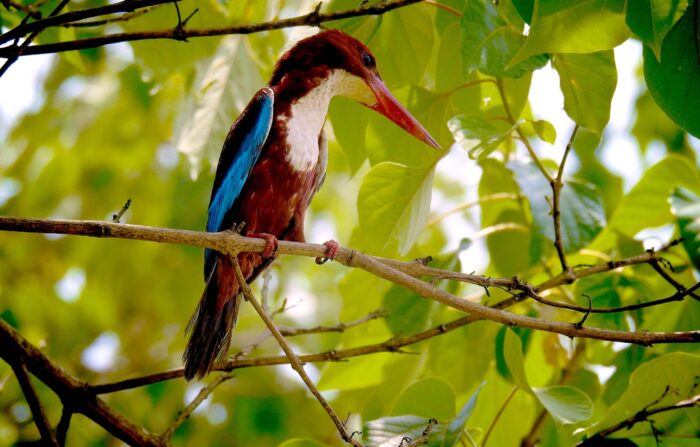

Unit 09 :
Vertebrates
![]()
![]()
![]()
![]()
![]()
![]()
Vocabulary
Let’s learn about different words related to vertebrate!
Part 1
1. brute /bruːt/
(n) an animal, especially a large one
2. vertebrate/ˈvɝː.t̬ə.brət/
(adj) having a spine (= back bone)
3. endoskeleton /ˌen.doʊˈskel.ə.t̬ən/
(n) a hard frame that supports the body of a vertebrate animal on the inside, made of bone or cartilage (= stong tissue)
4. amphibian / æmˈfɪb.i.ən /
(n) an animal, such as a frog, that lives both on land and in water but must produce its eggs in water
5. tadpole/ ˈTæd.pəʊl /
(n) a small, black creature with a large head and long tail that lives in water and develops into a frog or toad
6. scale /skeɪl/
(n) one of the many very small, flat pieces that cover the skin of fish, snakes, etc.
7. feather /ˈfeð.ɚ/
(n) one of the many soft, light things that cover a bird’s body, consisting of a long, thin, central part with material like hairs along each side
8. gizzard / ˈɡɪz.ɚd /
(n) a part of bird’s stomach that has thick muscles, where food is ground down (= broken into small pieces by pressing or squeezing ), especially with very small stones
9. crop /krɑːp/
(n) a group of people or things with something in common, that exist at a particular time
10. mammal /ˈmæm.əl/
(n) any animal of which the female feeds her young on milk from her own body
Exercise 1
Match the correct meaning to each vocabulary.
1. gizzard___ 2. feather___ 3. tadpole___ 4. amphibian___ 5. vertebrate ____
a) having a spine (= back bone)
b) an animal, such as a frog, that lives both on land and in water but must produce its eggs in water
c) one of the many soft, light things that cover a bird’s body, consisting of a long, thin, central part with material like hairs along each side
d) a part of bird’s stomach that has thick muscles, where food is ground down (= broken into small pieces by pressing or squeezing ), especially with very small stones
e) a small, black creature with a large head and long tail that lives in water and develops into a frog or toad
Part 2
11. marsupial /mɑːrˈsuː.pi.əl/
(n) a type of mammal from Australasia or South or Central America that is not completely developed when it is born and is carried around in a pouch (= a body part like a pocket) on the mother’s body, where it is fed and protected until it is completely developed
12. primate /ˈpraɪ.meɪt/
(n) a member of the most developed and intelligent group of mammals, including humans, monkeys, and apes
13. hominid /ˈhɑː.mɪ.nɪd/
(n) a member of a group that consists of humans, chimpanzees, gorillas, and orang-utangs, or an early form of one of these
14. cartilage /ˈkɑːr.t̬əl.ɪdʒ/
(n) a strong, elastic type of tissue found in humans in the joints and other places such as the nose, throat, and ears
15. atrium /ˈeɪ.tri.əm/
(n) one of the two spaces at the top part of the heart that receive blood from the veins and push it down into the ventricles (= lower spaces)
16. ventricle /ˈven.trɪ.kəl/
(n) either of two small, hollow spaces, one in each side of the heart, that force blood into the tubes leading from the heart to the other parts of the body
17. cerebrum /səˈriː.brəm/
(n) the front part of the brain, that is involved with thought, decision, emotion, and character
18. cerebellum /ˌser.əˈbel.əm/
(n) a large part at the back of the brain that controls your muscles, movement, and balance
19. Gill /ɡɪl/
(n) the organ through which fish and other water creatures breathe
Exercise 2
Describe the pictures with your teacher.





